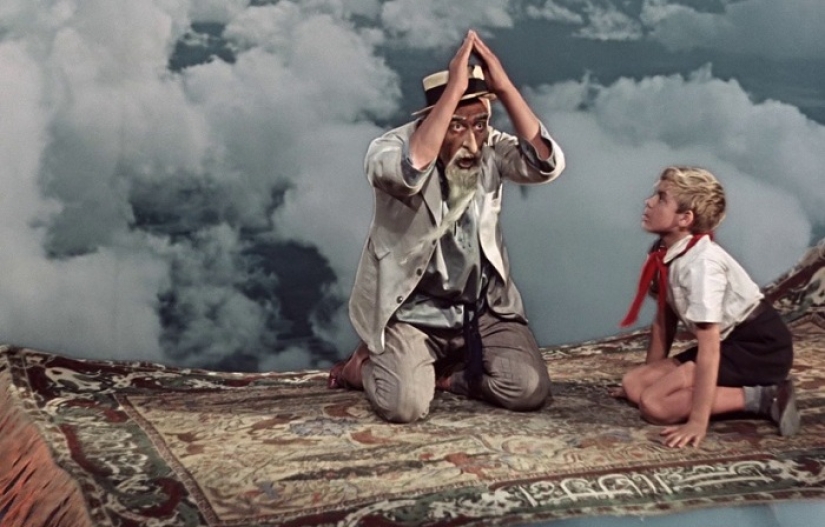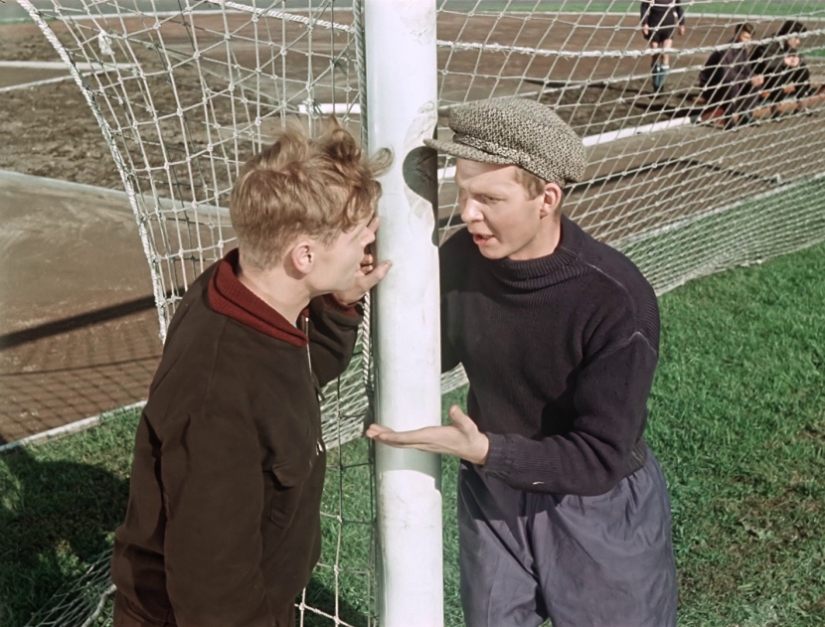How to create special effects for the movie "Old Man Hottabych"
We can talk endlessly about how cinematic special effects were made before the advent of computer graphics. What kind of tricks were not invented to make the viewer gasp!
Perhaps one of the most impressive Soviet films in this regard is the color fairy tale "Old Man Hottabych", shot at the Lenfilm film studio in 1956. Director Gennady Kazansky was given the unspoken task of plugging Hollywood behind his belt, so they did not spare money to create a picture. They spent them wisely, and the film turned out to be excellent — more than 40 million people watched it in the first six months of its rental alone.
Let's figure out what Lenfilm employees came up with to force the gates of the Chisel team to be exposed to the blows of the Puck players, and how the magic carpet hovered over Moscow.
(7 photos in total)

Source: NoNaMe

The most amusing turned out to be football scenes in which the gates "played" the way Hottabych wanted. The bars and crossbars bent, then hitting, then passing the ball. The magic gates were custom-made, they were sliding and could shrink and increase in size. Plus, the gates were installed on rails to guide them to the ball at the right moment. One of the rods was made of rubber. At the signal, the workers sitting in the pit pulled the cables, and the rod "missed" the goal.

Before he enchanted the gate, Hottabych decided that it would be pleasant for every football player to play with his own ball, instead of chasing one in a crowd. The episode in which a lot of balls fall from the sky was filmed at the small Leningrad stadium "Svetlana", which was finished with large stands, scoreboards and spotlights. Director Kazansky gave the players a ball and asked them to throw them high up, and then, when scrolling back through the frames, it turned out that the balls were flying from above. Close-ups of the spectators sitting in the stands, by the way, were already filmed at the Kirov Stadium. But the players were real — professionals were invited to shoot.
Nikolai Volkov, who played Hottabych, had to go through a serious ordeal when filming a scene in a circus. According to the plot, the genie absorbs one ice cream after another and eventually catches a cold. The actor did not eat ice cream, but glazed cheeses impaled on a stick. There were a lot of takes, and when the director finally said the cherished "Shot!", Volkov had already swallowed so many cheeses that he could hardly move.
But the greatest burden fell on the workshop of combined filming. The Research Institute of Television has developed a new film camera and a developing machine specifically for the "Old Man Hottabych". Thanks to the use of the "wandering mask" method, which was advanced at that time, luxurious palaces appeared on the screen out of nowhere, and a caravan of elephants and camels marched along the metropolitan boulevard. This procession was filmed in Odessa, where at that moment a circus was touring under the direction of Kornilov, who provided the filmmakers with his animals. They walked through the local streets, and during the installation, Odessa houses were replaced with Moscow ones.
The most difficult were the shooting of the flight on the magic carpet. The scene on the outlandish vehicle was filmed in the pavilion, and then the necessary background was applied. Clouds were created with the help of smoke, because of which the performer of the role of Zhenya began to cry when he threw down the bananas donated by the Hindus. But it was so appropriate that the director decided to leave everything as it is. These fantastic shots gathered crowds of people in the fourth pavilion of Lenfilm.
About bananas, by the way, a separate conversation. They're green for some reason. The fact is that the props had little idea what color the overseas fruits should be. They appeared in Soviet stores only in the late 50s. Therefore, bananas made of papier-mache were painted as God puts it on the soul — with emerald paint.
Keywords: Behind the scenes | Soviet cinema | Special effects | Films
